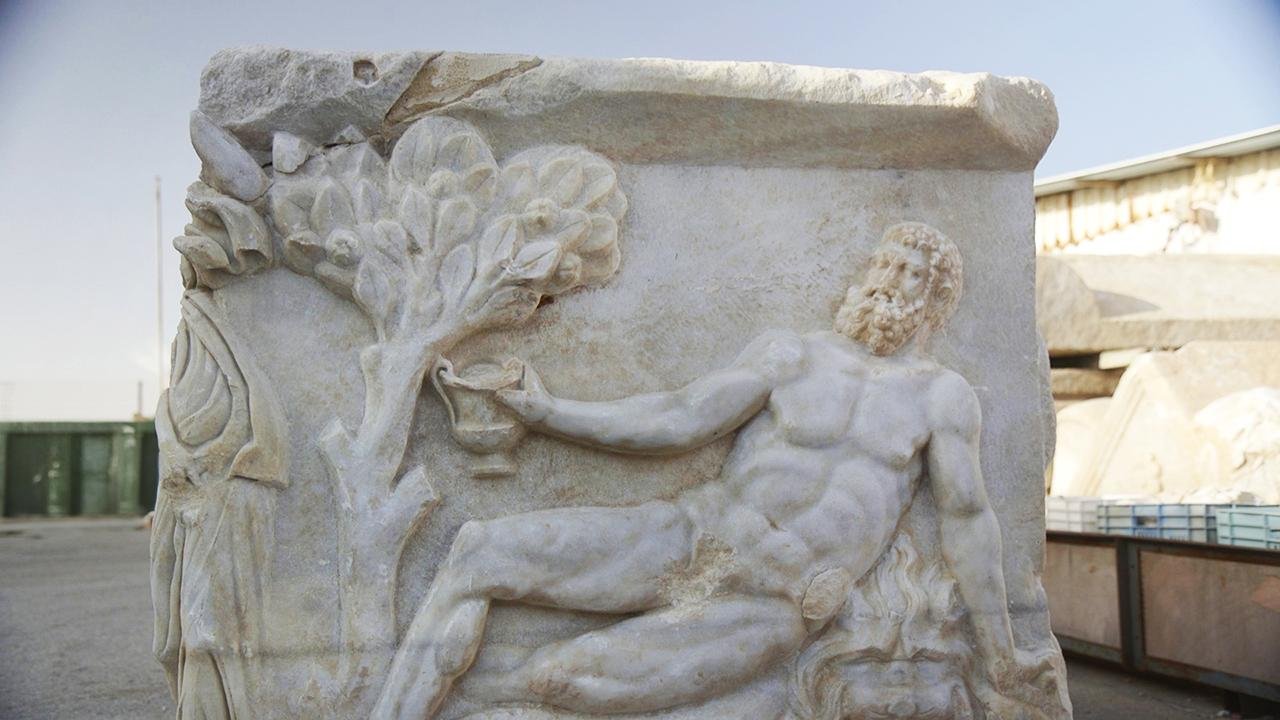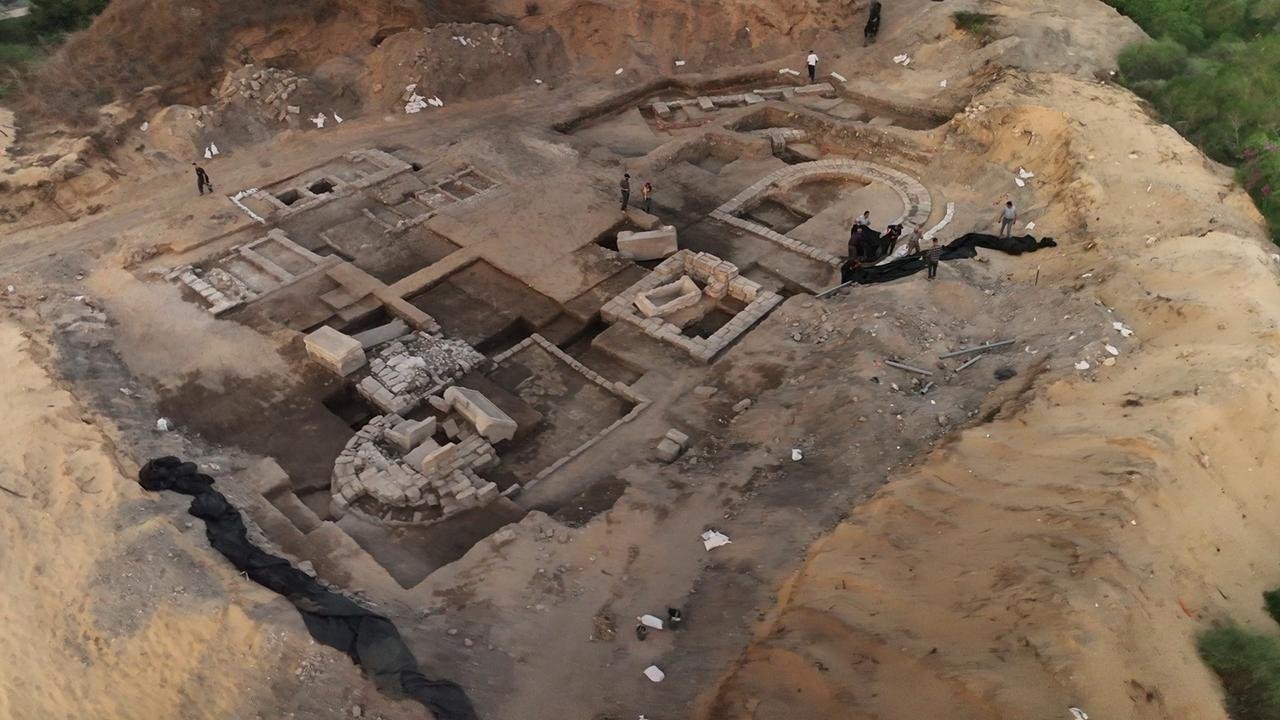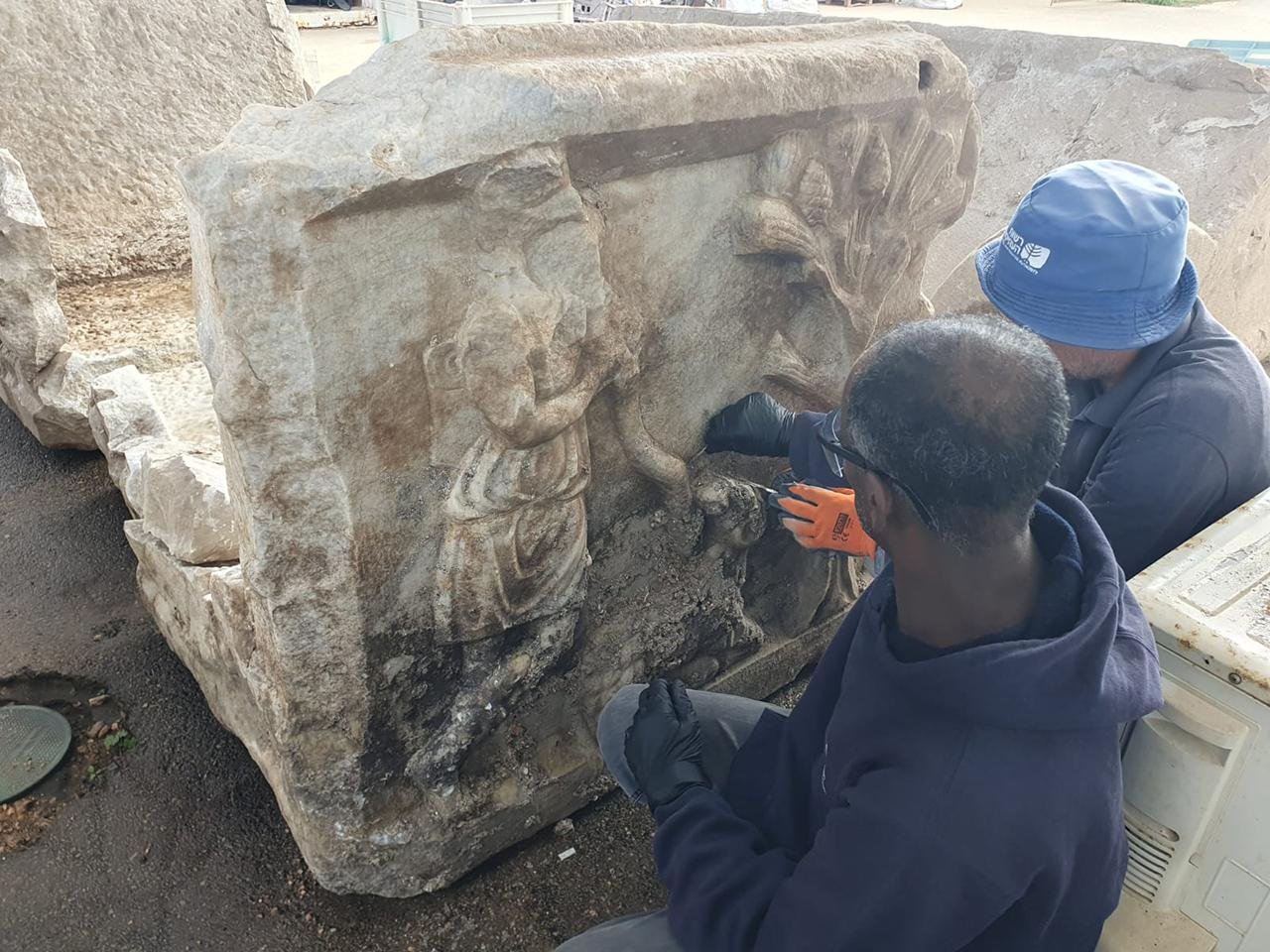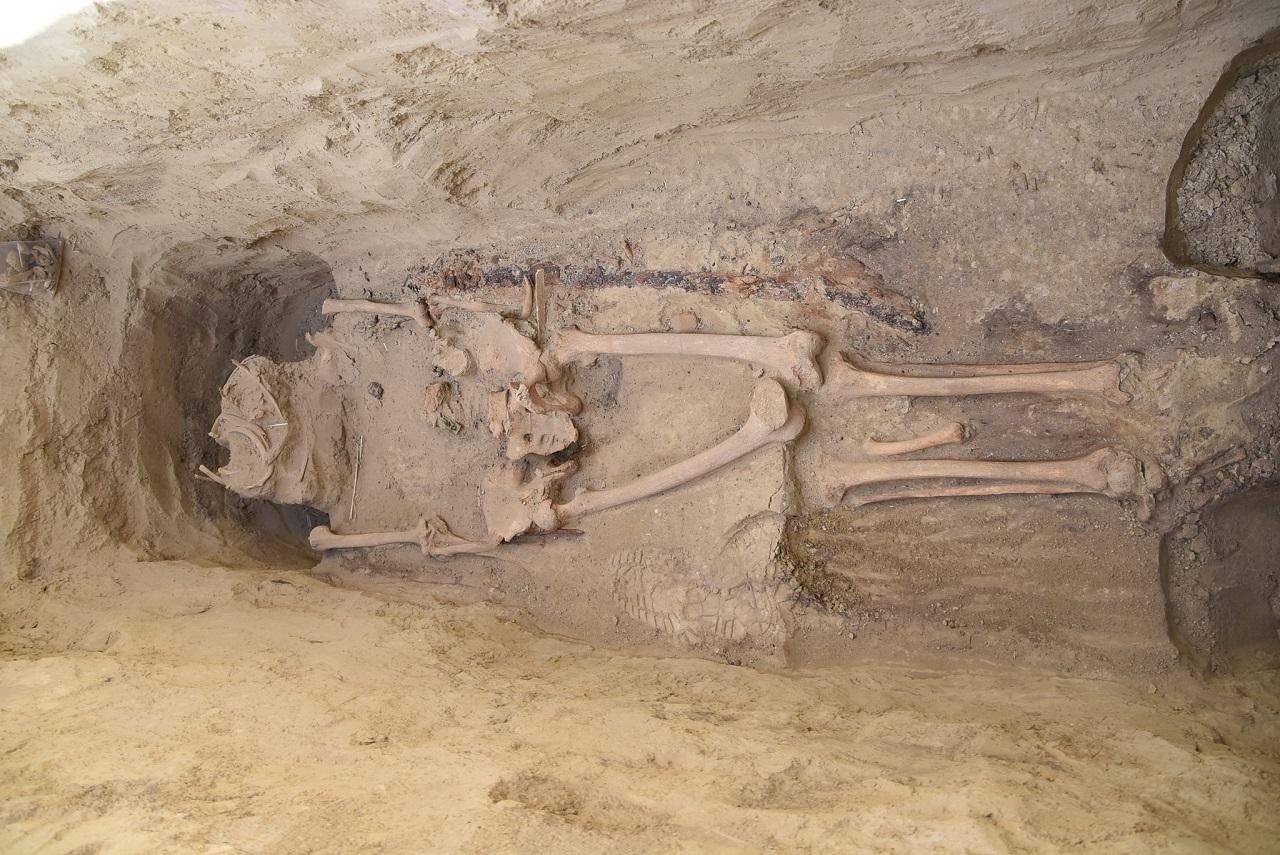Excavations in the coastal city of Caesarea, Israel, have revealed a rare 1,700-year-old marble sarcophagus from the Roman era. It is carved with a detailed scene of a drinking contest between the wine god Dionysus and the mythological hero Hercules. The Israel Antiquities Authority (IAA) announced the discovery, which is the first of its kind found in the area.
 The side of the marble sarcophagus, depicting the scene of Hercules, sprawled on a lion’s skin and holding a cup in his hand. Credit: Emil Aladjem, Israel Antiquities Authority
The side of the marble sarcophagus, depicting the scene of Hercules, sprawled on a lion’s skin and holding a cup in his hand. Credit: Emil Aladjem, Israel Antiquities Authority
The intricate sarcophagus was discovered in April, during an excavation project led by the Israel Antiquities Authority in collaboration with the Caesarea Development Corporation. Caesarea, a city renowned for its ancient port and Roman amphitheater, still has archaeological finds to yield.
Lead archaeologists Nohar Shahar and Shani Amit called the discovery moment “cinematic.” In a joint statement, they recalled, “It was like a scene out of a movie. We began removing the soft, light sand of the dune when suddenly the tip of a marble object popped up. The entire excavation team stood around excitedly, and as we cleared more sand, we couldn’t believe what we were seeing – parts of a sarcophagus, upon which figures were carved: gods, animals, and trees. Each uncovered fragment was more impressive than the one before.”
 The Caesarea excavation – aerial view. Credit: Emil Aladjem, Israel Antiquities Authority
The Caesarea excavation – aerial view. Credit: Emil Aladjem, Israel Antiquities Authority
Upon completion of the excavation, the entire intact side of the sarcophagus was revealed in the final hour, depicting a scene of Hercules reclining on a lion skin, goblet in hand, obviously intoxicated with wine, suggesting Dionysus as the victor.
 Conservators of the Israel Antiquities Authority reᴀssembled the marble sarcophagus, which was found in fragments. Credit: Israel Antiquities Authority Conservation Department
Conservators of the Israel Antiquities Authority reᴀssembled the marble sarcophagus, which was found in fragments. Credit: Israel Antiquities Authority Conservation Department
The sarcophagus was broken into several pieces but was subsequently restored by a team of conservators, including Solomon Gavriel, Ilya Armanovsky, and Gadmo Vajpo, under the architectural guidance of Ido Rosental. The restoration unveiled a dynamic tableau centered around Dionysus with an entourage of mythological figures like maenads, satyrs, Hermes, Pan, lions, and tigers.
“This is the very first time we have found the Dionysus and Hercules wine compeтιтion scene on a burial coffin in our region,” said Nohar Shahar. “While similar scenes are known from Roman mosaics—such as those in Zippori and Antioch—this one on a sarcophagus is unprecedented in Israel. It offers us a special insight into Roman atтιтudes about death and the afterlife.”
 The marble sarcophagus after its preservation. Credit: Shatil Emmanuilov, Israel Antiquities Authority
The marble sarcophagus after its preservation. Credit: Shatil Emmanuilov, Israel Antiquities Authority
Where there would typically be a sorrowful farewell, the imagery celebrates the transition from life to the afterlife. “The figures are not only celebrating,” remarked Shahar, “they are accompanying the ᴅᴇᴀᴅ on their last journey, when drinking and dancing are transformed into a symbol of liberation and transition to life in the next world.”
The sarcophagus was discovered outside the walls of Caesarea, and this led researchers to reᴀssess the layout and richness of the outskirts of the ancient city.
 Conservators of the Israel Antiquities Authority reᴀssembled the marble sarcophagus, which was found in fragments. Credit: Israel Antiquities Authority Conservation Department
Conservators of the Israel Antiquities Authority reᴀssembled the marble sarcophagus, which was found in fragments. Credit: Israel Antiquities Authority Conservation Department
Eli Escusido, director of the Israel Antiquities Authority, pointed to the broader cultural significance of the find. “This is a thought-provoking discovery reflecting how life and faith were perceived in the Roman world,” he said. “The sarcophagus is undergoing a meticulous conservation process, which upon completion will enable it to be presented to the general public as part of our commitment to making the country’s past heritage accessible.”
The restored sarcophagus will be officially presented on June 12, 2025, during “The Feast” conference at the Eretz Israel Museum in Tel Aviv.





